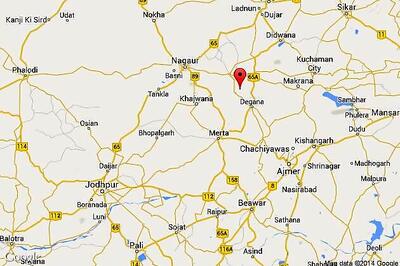
views
New Delhi: Uday Kotak, VC and MD, Kotak Mahindra Bank, said global liquidity conditions are still benign and that despite tightening rates the economy is in good shape.
For FY08, he is looking at a GDP growth of 8-8.5 per cent. However, valuing companies at an 8-10% growth environment is a challenge as traditional valuation models look at a GDP growth of 4%, Kotak said. Over the next five to seven years, India could see a growth rate of 8-10%, he said.
Kotak cautioned that looking at the short-term Price earnings ratio is not the right way to value companies. Managing excessive money supply productively is a challenge, he said. The rising rupee gives a chance to improve costs, he said, adding that flows will continue to put pressure on the rupee strengthening.
Excerpts from CNBC-TV18’s exclusive interview with Uday Kotak:
Q: Where does India fit into that context of emerging markets and their move up?
A: We are at a very interesting time with global liquidity conditions being extremely benign. The Indian economy, as you have seen the numbers for the year-ended March 2007, is powering ahead at a GDP growth of 9.4%. Despite a little bit of tightening in interest rates in India, the overall economy is in great shape. For the current year, we are looking at a GDP growth of 8-8.5% for FY08. The condition is perfect in terms of domestic growth with a little bit of domestic tightening. But with global liquidity conditions being great, India's is on a very good wicket.
Q: The common refrain that we hear from a lot of investors is that we love India and the market but sometimes we get a little apprehensive on the price we are playing to get into this market. Are valuations a concern, have they reached those levels yet?
A: Do you look at valuations and PE on the basis of three months, six months, one year, or look at it from a three-five year timeframe. With this kind of GDP growth rates, what it can do for individual sectors and companies. That is the challenge, which the financial community is grappling with. I believe that India is now in a sustainable 8-10% GDP growth rate over the next five-to-seven years. If that happens, it will dramatically and profoundly change sectors and companies. Therefore, looking at just the short term PE may not be the right way of valuing companies.
Q: Are you saying this market has scope for upward re-rating or do you think it will simply carry on chugging at the earnings growth trajectory over the next few years?
A: I think fundamental optimism remains. If at all one is looking at a possible area of worry, it is the capacity of the Indian economy to handle the volume of money, which is directed at India. As these flows come in, the challenge is of an appreciating rupee combined with risks of an excessive money supply and what that does to potential inflation and asset price increases. How does an economy like India use this significant global flow, which it is getting today, productively into investment channels and prevent the risks of ballooning asset prices? That, I think is the challenge.
Q: What might turn things around in global markets?
A: The biggest factor today is the levels of credit expansions in the world. The debt markets have seen a phenomenal tightening of spreads and the readiness of most financial institutions to take significantly more risk for lower spreads. The credit expansion, which has happened around the world, has also helped create the money supply and liquidity in the global markets through the debt capital markets. It is something, which one needs to watch out for. The cause of global liquidity is monetary expansion around the world, a significant growth in the global debt markets and tightening credit spreads.
PAGE_BREAK
For instance, today if you look at the entire private equity buyout and hedge fund space, the levels of leverage, which most of these institutions are now operating at, are significant. It is a virtuous cycle that creates a positive element. If there is a change in that cycle, there could be ramifications on global liquidity and consequently impact markets including India.
Q: What are your observations on the kind of deal buzz that we are seeing because in the last couple of months we have seen a couple of deals - inward or outward - every week? Do you think that would be one theme that will get discussed in this conference and do you expect to see more of it going forward?
A: Absolutely. Even on the portfolio side, there are new pools of money coming in from newer areas like West Asia, Far East, and Australia. India is now attracting capital much more broadly than before. India’s problem is reverse. How do you handle this volume of money, which is coming into India, from the point of view of the economy’s ability to absorb it?
Q: What is this doing to the Indian currency as it’s a very important point or part of the puzzle for a lot of global investors? If you are expecting that kind or that humongous nature of flows into this country where is the rupee headed versus the dollar and how can it change equations for investors?
A: The challenge for Indian producers as the rupee appreciates, based on flows, will be their ability to constantly improve productivity, processes, and costs, to be competitive in due course. One of the challenges for the Indian industry, which has had a wonderful time in a depreciating rupee environment for many years, is to compete now on real terms through productivity gains.
The Indian industry will face up to that challenge, but there is no doubt that it’s a challenge irrespective of what may be the fundamental issues or rupee adjusted exchange rates. The fact of the matter is that flows will put pressure on the rupee strengthening. I don’t see doubt about that unless there is dramatic reversal of flows.
Source: Moneycontrol.com














Comments
0 comment